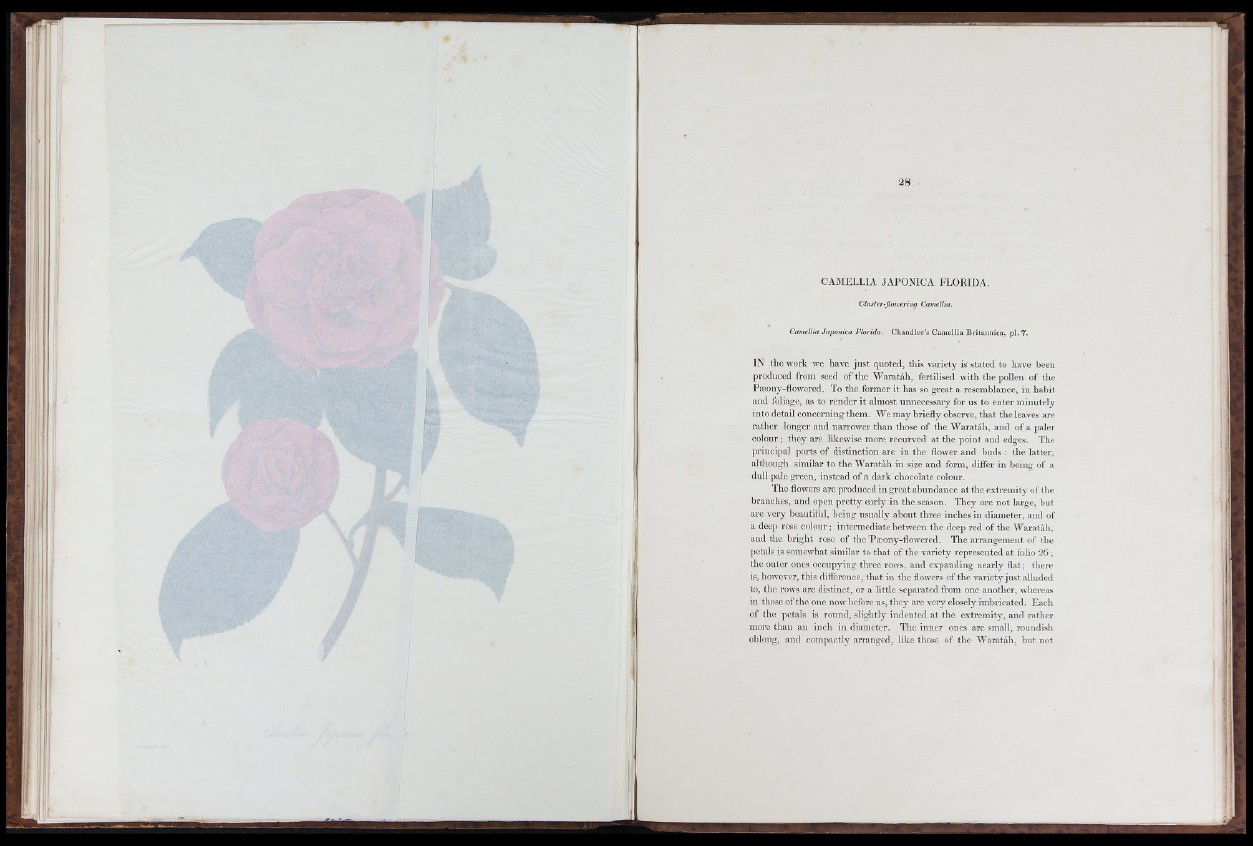
CAMELLIA JAPONICA FLORIDA.
Cluster-flowering Camellia.
Camellia Ja ponica F lo r id a . C h a n d le r ’s C am e llia B r ita n n ic a , p i. 7.
IN the work we have ju s t quoted, this variety is stated to have been
produced from seed of the Wa ra táh, fertilised with the pollen of the
Peeony-flowered. To the former it has so great a resemblance, in habit
and foliage, as to render it almost unnecessary for us to enter minutely
into detail concerning them. We may briefly observe, th a t the leaves are
rather longer and narrower than those of the Waratáh, and of a paler
colour; they are likewise more recurved a t the point and edges. The
principal parts of distinction are in th e flower and buds ; th e latter,
although similar to th e Wa ra táh in size and form, differ in being of a
dull pale green, instead of a dark chocolate colour.
The flowei-s are produced in great abundance at the extremity of the
branches, and open p retty early in the season. They are not large, but
are very beautiful, being usually about thi-ee inches in diameter, and of
a deep rose colour; intermediate between the deep red of the Waratah,
and the b right rose of the Pasony-flowered. The arrangement of the
petals is somewhat similar to th a t of the variety represented a t folio 26;
the outer ones occupying three rows, and expanding nearly fla t; there
is, however, this difference, th a t in the flowers of the variety ju s t alluded
to, the rows are distinct, or a little separated from one another, whereas
in those of the one now before us, they are veiy closely imbricated. Each
of the petals is round, slightly indented a t th e extremity, and rather
more than an inch in diameter. The in n e r ones are small, roundish
oblong, and compactly arranged, like those of the Waratáh, b u t not